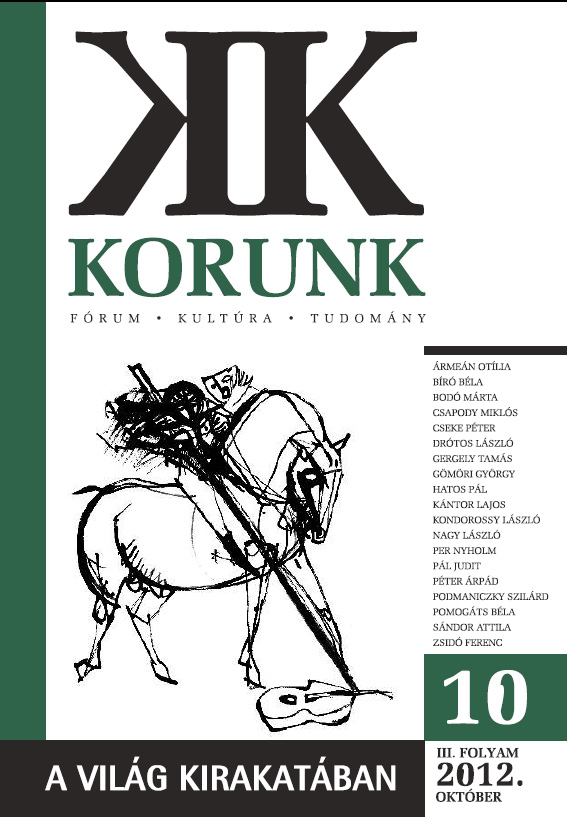
A szép szenvedés könyve
Egyed Emese: Briszéisz, Erdélyi Híradó Kiadó, Elõretolt Helyõrség Szépirodalmi Páholy, Kolozsvár, 2011
More...We kindly inform you that, as long as the subject affiliation of our 300.000+ articles is in progress, you might get unsufficient or no results on your third level or second level search. In this case, please broaden your search criteria.

Egyed Emese: Briszéisz, Erdélyi Híradó Kiadó, Elõretolt Helyõrség Szépirodalmi Páholy, Kolozsvár, 2011
More...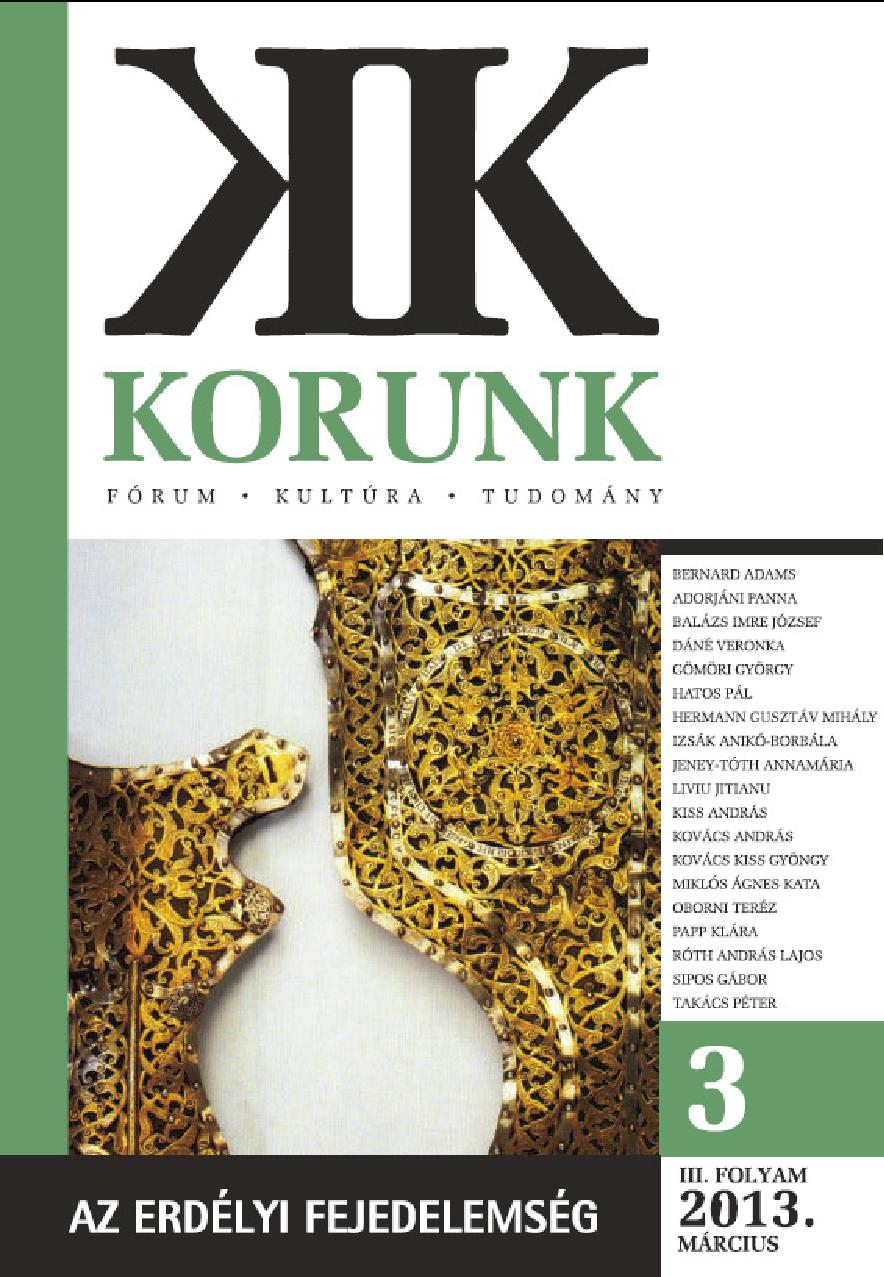
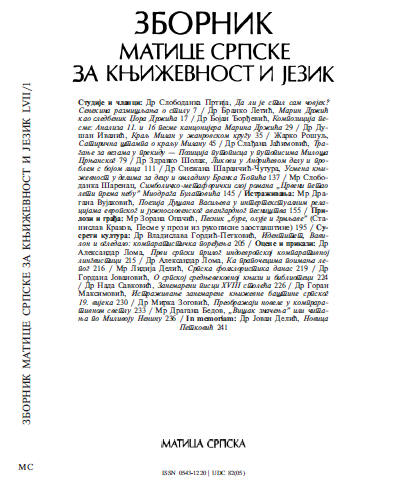
The paper points out the spiritual and poetic similarities between the poetry of Dušan Vasiljev and the poets of different expressionist streams in the German literature (nihilism of Georg Heym and Gottfried Benn, cosmism of Alfred Mombert, Theodor Deubler, activism of Johannes Becher, Ludwig Rubiner and others). The author then more extensively investigates the intertextual relations with the poetry of the Hungarian poet Endre Ady and the south Slavic poets of the expressionist period (Miroslav Krleža, Miloš Crnjanski, Srećko Kosovel). Dušan Vasiljev’s poetry is placed in a broader, international avant-garde context to establish more precisely the literary-historical position of this poet between the extremes of the expressionist streams — the abstract and activist ones.
More...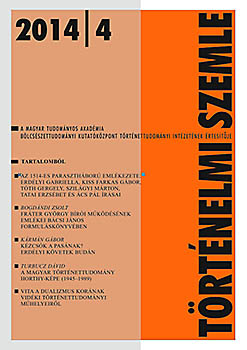
The Stauromachia of Stephanus Taurinus (1519), the most significant literary account of the 1514 peasant war in Hungary, has been justly considered as a work deeply imbued with the ironic view of history and human fate. In my lecture, I will offer a survey of the Latin and vernacular works from the Jagellonian age in Hungary, which might be associated with paradoxic and ironic story-telling. Starting with the Apologia regis Wladislai (1493) to the edition of Homeric Batrachomyomachia by Bartholomaeus Frankfordinus and the ironic declamation of Valentinus Hagymási (De laudibus et vituperio vini et aquae), the ‘oblique’ manner of speaking was more present than ever before in the humanistic culture of the age. After reconsidering the ancient and contemporary sources of oblique narration, I argue that this contextual evidence must be taken into account in the interpretation of the Stauromachia.
More...
The study examines the role that the peasant revolt of 1514, generally attached to the name of György Dózsa, played in the collective memory in Hungary in the 1840s. It contests the argument according to which alongside the traditional, conservative approach, which condemned the revolt, there would have emerged a revolutionary view, which already presented the events as examples to follow. It argues, rather, on the basis of several contemporary literary works, that there continued to exist in the 1840s an attitude which extended back to 1514 and was influenced by consequent waves of violence, and which, as a result, regarded the peasant revolt as a shocking example and rejected all forms of collective violence. This, however, was certainly not conservative in terms of ideology or the history of ideas, but reflected simply the norm. It was certainly not the reinterpretation of this conceptual framework which started then, and it is totally mistaken to suppose that the new tones in praise of Dózsa emerged with equal force: the examples which apparently prove this are to be assessed in a different way. What, indeed, can be regarded as a novelty is the sporadic yet total negation of the attitude regarded as the norm (as in the gesture of Sándor Petőfi , the most outstanding poet of the period), or its logical transcending (as the Christian salvational approach in the novel of József Eötvös). None of them amounts to a presentation of the Dózsa peasant war as an affirmative example, however, for both preserve a strong aversion to destructive violence.
More...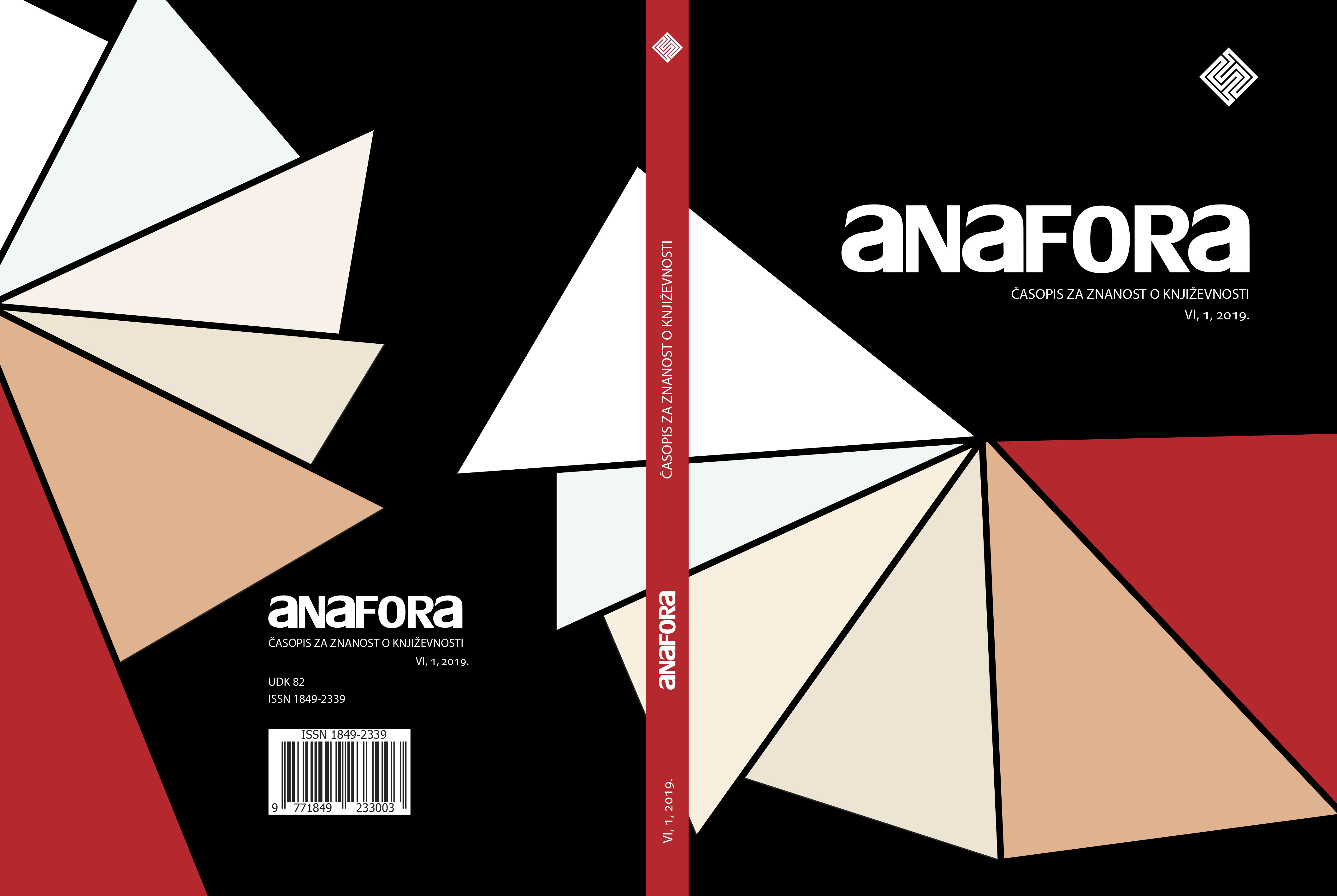
The paper discusses the legacy of the renowned Hungarian writer, Miklós Mészöly, in the literary and political context of the ’50s and ’60s of the last century. The research is based on genetic criticism − on the exploration of autograph diary notes, written drafts, various original manuscripts − and focuses on previous versions of Mészöly’s final texts. The study deals with a specific part of Mészöly’s wide-ranging oeuvre. The paper focuses on the early prose works Az atleta halala (Death of an Athlete, 1966), Saulus (Saul, 1968), and Pontos tortenetek, utkozben (Exact Stories on the Road, 1970) that have had a poetically and theoretically stimulating effect on the Hungarian contemporary authors and scholars. The paper includes several important and formerly unknown documents from the Mészöly heritage collection, kept in the Petőfi Literary Museum, which revise the interpretations of Mészöly’s above-mentioned works.
More...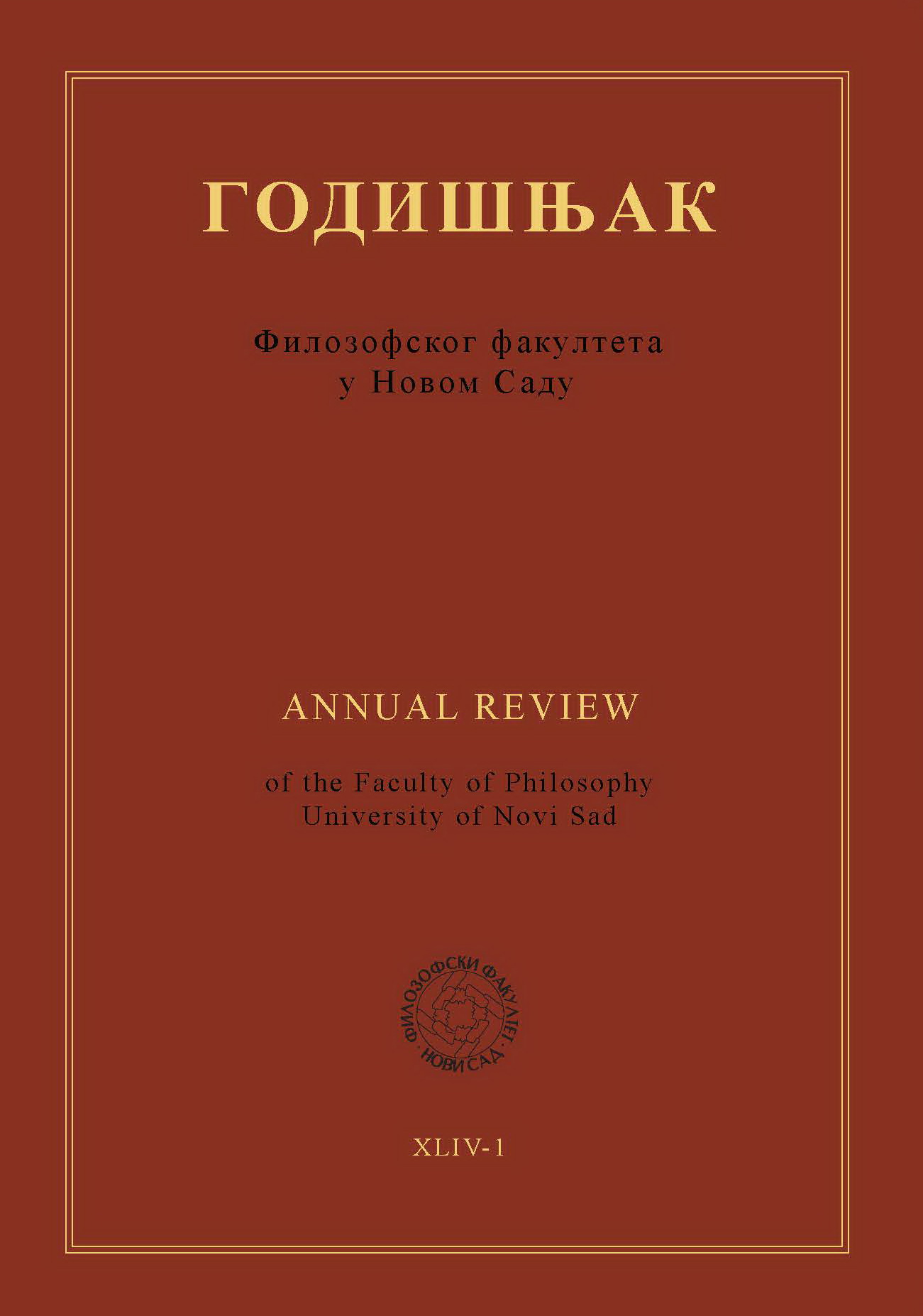
In the creative course of the literary works, naming becomes emphasized, the name system of certain writings or authors is often key to interpretation. This study examines the problems of literary naming and the translation of names in Nándor Gion’s four-volume novel that can be placed in the genre of “band novels” as well. The novels relate in chronological order, through four seasons of a child band's adventures: the holiday novel Kárókatonák még nem jöttek vissza (1977) (Cormorants Have Not Come Back Yet), the Sortűz egy fekete bivalyért (1982) (Volley for a Black Buffalo) continues the plot in autumn, Az angyali vigasság (1985) (The Angelic Feast) in winter, when the children evoke the habits of the Christmas holiday circle, and they get involved in the adults’ things by saying the angelic feast, and the Zongora a fehér kastélyból (2003) (Piano from the White Castle) closes the story in spring. Besides the identical sites, back and forth references, repetitive motives and passages, the four novels are combined together by the recurrent characters as well. The study classifies the name theme of the novels (personal names, animal names), examines the extra meanings they carry (e.g. they demonstrate variegated nationality of the country, indicate the change in the community’s nationality combination), their portrayal and stylistics role, the process of naming becoming thematized in the texts (e.g. the development of certain nicknames). We can assign Gion’s characters’ names to eight categories: with full name (with a surname and first name), with surname and nickname, with surname and with a drop cap, figures named with surnames, names completed with an occupation name, names completed with a constant attribute, names completed with constant attribute and an interpretative attribute, and telling names. One of the most frequently and for the longest time used literary devices is the telling name that is selected by the author for his hero in depicting the person’s physical or spiritual property by its meaning or word mood. The novel texts reflect the formation of certain names, the act of naming and name usage in diverse places. Apart from the identifying-nominating function and characterization of the characters, the telling names have a plot forming role as well. The study examines the translator procedures that helped the Serbian translator translate the names, in order to raise the same associations in the target language reader as in the original text reader.
More...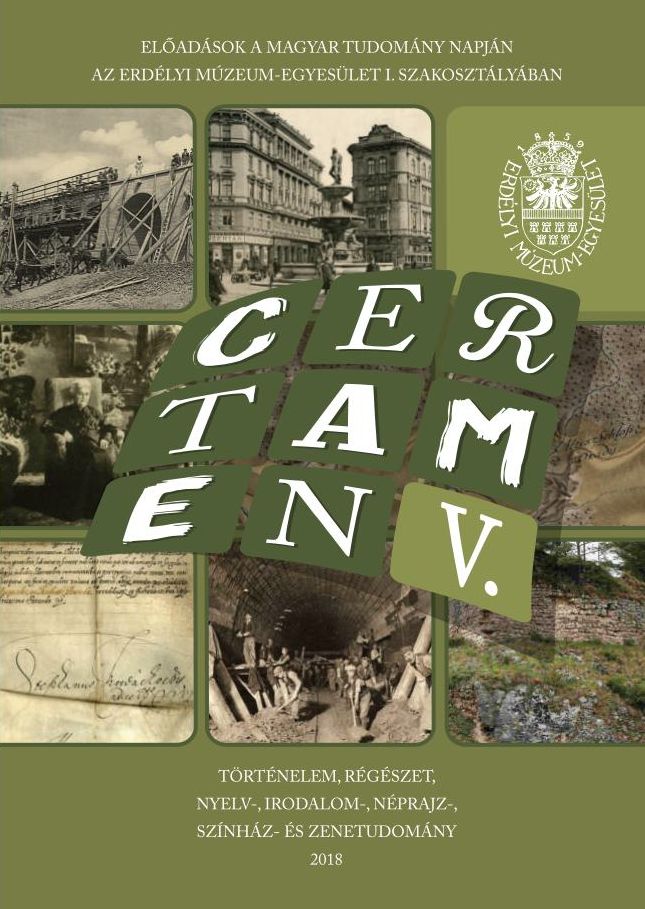
The present study is based on the non-autographed manuscript of Franz Xaver Girzik‘s drama Die Erstürmung des Prinzen Eugenio Thores oder Temeswars Befreyung (1813) to be found in the theatrical collection of the Széchényi National Library and tackles, after a comprehensive drama analysis, the text deletions from the prompt book from the year 1825. The author investigates the cultural environment in which the Czech actor, active in the Kingdom of Hungary, presented his play, why he chose this particular historical material and why the drama only came to the German stage in Buda for the first time in 1826. Girzik‘s Temeswar-Drama constitutes an exciting example for the Prince Eugen-cult in the 19th century.
More...
One of the “symptoms” of the 20th spiritual-cultural milieu is the flowing of psychoanalysis into the public discourse and literature both as a subject and as an approach. This produces genres overlapping between science, autobiography and fiction, speaking from different professional backgrounds, with partly different motivations and “implied readers”. Their common element is the need of self-reflection, with a desire and ability to textually record its result, moving from scholarly discourse towards fiction, or from fiction towards self-analysis. My paper explores through the examples of a few women psychoanalysts and writers, how some analysts use the autobiographical and fictional genres, how psychoanalytic knowledge can be the background/foreground of autobiography/autofiction and how literary skills and forms can become the field and tool of self-analysis. The analysed works include the autobiographical novel of psychoanalyst Edit Gyömrői, the diaries of psychoanalyst Alice Bálint, the autobiographical writings, portraits and short stories of Mrs. Kosztolányi Ilona Harmos, and two novelettes of Sophie Török.
More...
The first part of the study presents the indirect relations of Gh. Șincai, member of the Transylvanian School with the Society for the cultivation of the Hungarian language in Transylvania and with Aranka György. Through the presentation of relations, we have tried to outline how the Transylvanian Hungarian intellectuals could help the work of the Romanian scientist and how contributed to his nomination of reviser and censor of the University Press of Buda in the first place. The second part of this academic paper deals with the Romanians four languages Lexicon, paying attention especially to the strengthening of the Romanian identity.
More...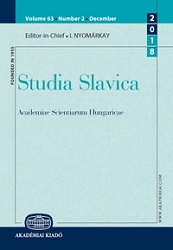
The German cultural periodical Ost und West was published in Prague between 1 July 1837 and 10 June 1848. The goal of its editor, the librarian Rudolf Glaser was the mediation between East and West from Austria, Germany, Russia, and the Balkan countries. A lot of articles were published on Czech, Moravian, Russian, and Polish literature, but the culture of other countries was also mentioned in the form of novels, dramas, poems, travelogues, and other genres about regional matters, music, theatre, etc. Its target readers were the educated bourgeoisie of the age. The literary contributions in Ost und West were submitted by authors. Czech folk poetry played a special role among the subjects. Every now and then, Hungarian authors’ works were included (e.g. Pál Jámbor’s poem and Károly Kisfaludy’s novel) in German translation. Karl Georg Rumy, the enthusiastic collaborator of many German-language papers of the Central European region and a zealous propagator of Hungarian literature sent reports to the journal on several occasions. The reviews of the young Frigyes Szarvady also appeared in Ost und West. Julian Chownitz, among others, reported on local curiosities.
More...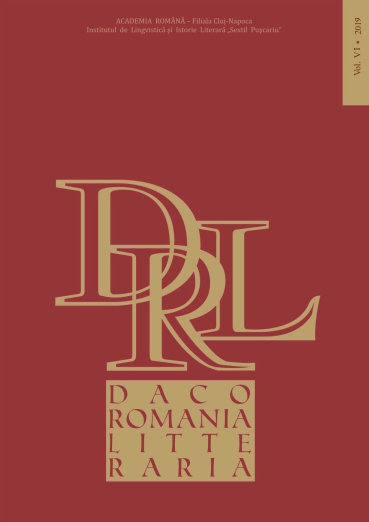
The delimitation of a literature according to the ethnicity of the authors is problematic in the case of the Romanian men of letters who, at the beginning of the 20th century, wrote and published in Hungarian studies in the history of Romanian literature. Both the professional status, and the multilingualism played a major role in their scientific development. The basic criterion of judging the literature values is usually the aesthetic one; this is why writing in a foreign language, in this case – Hungarian, did not increase the literary recognition. It is the bibliographic value of such a corpus that makes it useful for the research of intercultural relations.
More...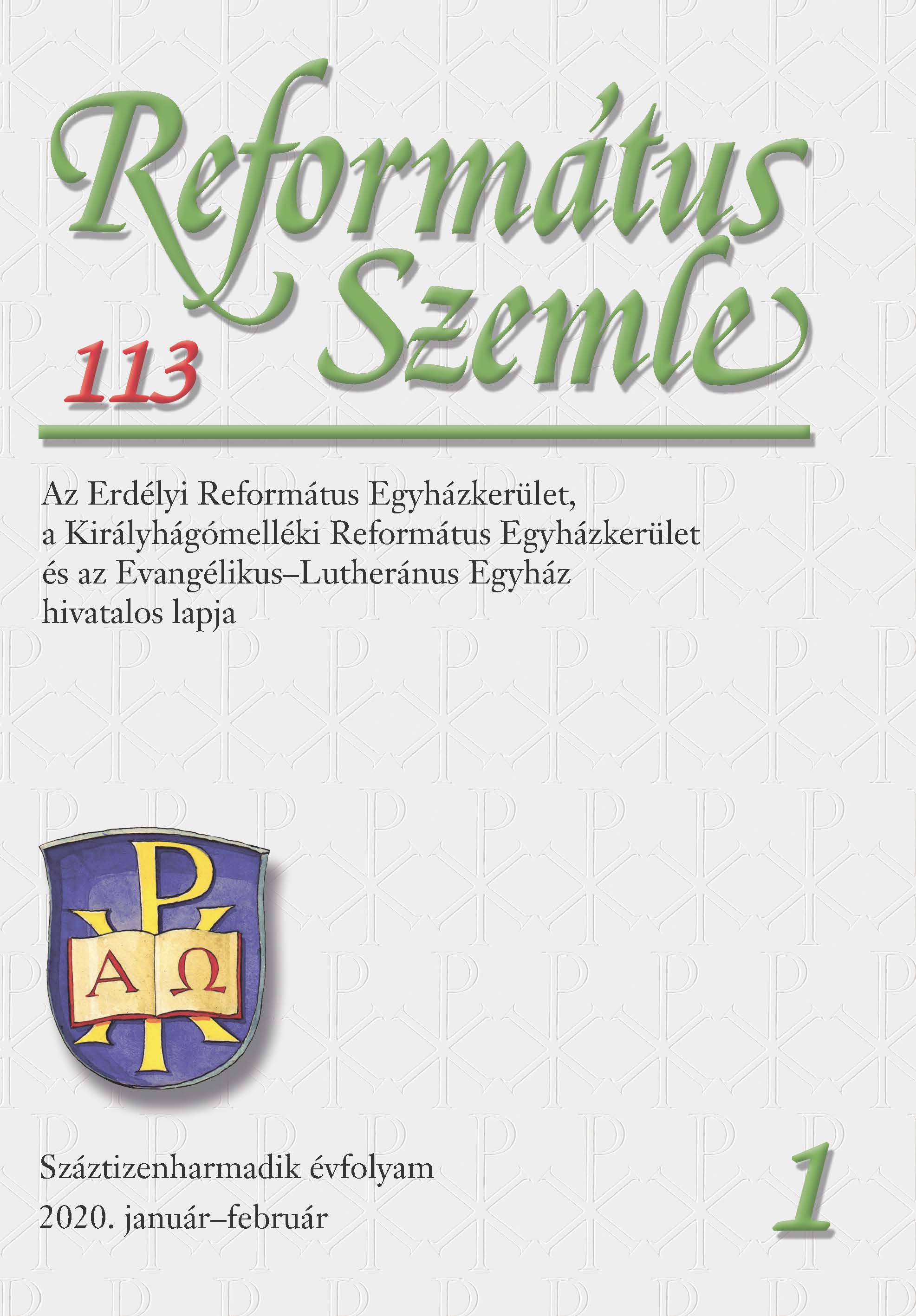
For centuries, our hymnbooks bring to the fore not only the issue of musical literacy but also tradition. The Reformed church singing in Transylvania and the Partium was determined by traditions rather than by the sheet music itself. From the beginning of the 19th century the Transylvanian hymnbooks were created under the influence of the spirit of the time. A typical example of this is the hymnbook edited under the influence of theological rationalism in 1837. The hymnbook, edited by Seprődi János in 1908, only partially corrected the melody deterioration while the edition of 1923 further preserved the sorting of cut and leveled melodies, which lacked psalms and old Hungarian songs. If we compare the 1837 hymnbook with the one published in 1921 in Debrecen, which also provides balanced melodies, we can see that melodies enriched with melisma remain in practice in Transylvania and this tradition is still preserved in many places to this day.
More...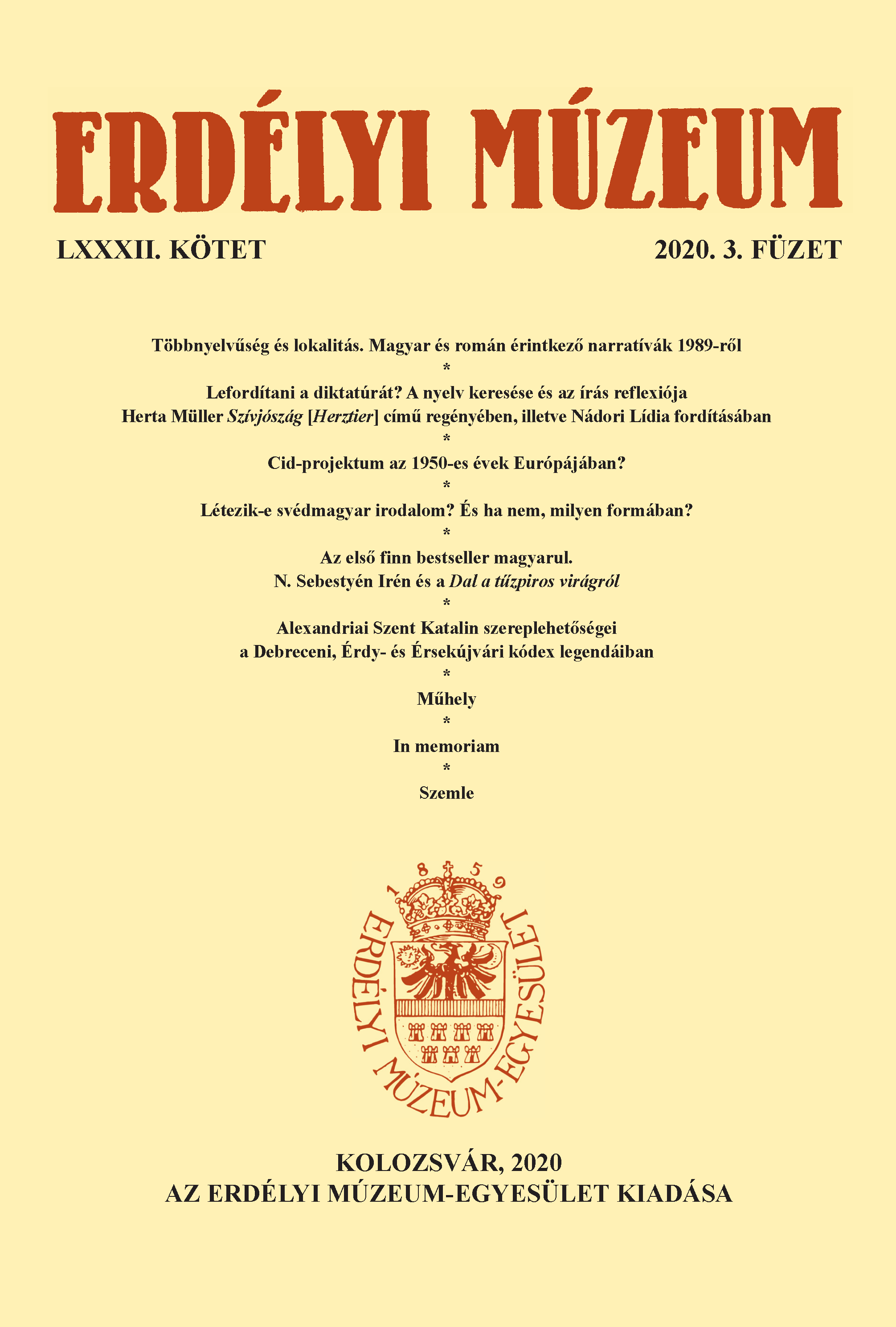
The article presents the annotated almanacs of the Ottoman-language interpreter Dávid Rozsnyai. These annotations mark a series of events and deeds noted by the interpreter that fill in the blanks of his biography, as it appears in the rest of his ego-documents (journal, memoirs, autobiography), covering the years of his life for which we also have very few information from other sources. From 1708, in his almanacs start to appear annotations written by his son, Sámuel. At the beginning, the youngster uses the pages left blank to practice his writing and translation skills, to draw and imitate the printed text. Later on, Sámuel starts to write his own annotations and, eventually, he “translates” into writing the annotations dictated by his father, together with drafts of letters, probably also dictated by the senior Rozsnyai. These joint annotated almanacs not only mark the passing of time and the merging of memories, but also become instruments of memory and remembrance. The annotations also show the common practice of writing inside the family and its common mentality towards writing and familial ego-documents.
More...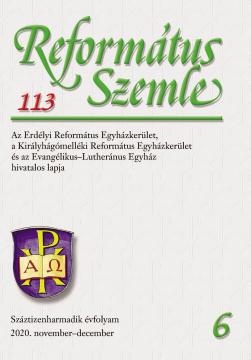
In this study, we briefly outline the possible sources of a disputation written by the Transylvanian polyhistor Sámuel Kaposi and make reserved statements about the authorship and originality of this disputation. Our aim is to draw attention to this interesting text, which is perhaps the first Hungarian work dealing with spiritual desertion, a topic peculiar to English and Dutch Puritans.
More...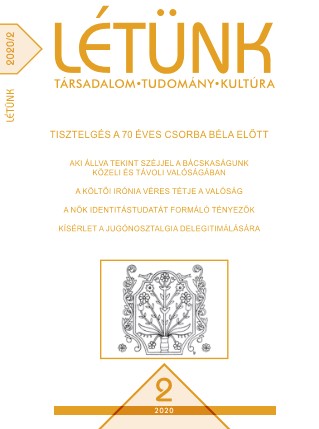
The 70th birthday of the ethnographer, native historian and historian Bela Csorba is an appropriate event to review and evaluate the results of this fruitful and creative career. The focus of the scientist's interest was the history of his native village, Temerin, however, when exploring the events and values of folk life he always liked to see and expand the area of southern Bacska. During his research career of more than half a century, he has always, as in every activity, evaluated the work of the Hungarian community in creating authentic values, occasionally emphasizing the importance of the activities of some exceptional individuals. In his ethnographic books he summed up two hundred years of the history of his beloved community.
More...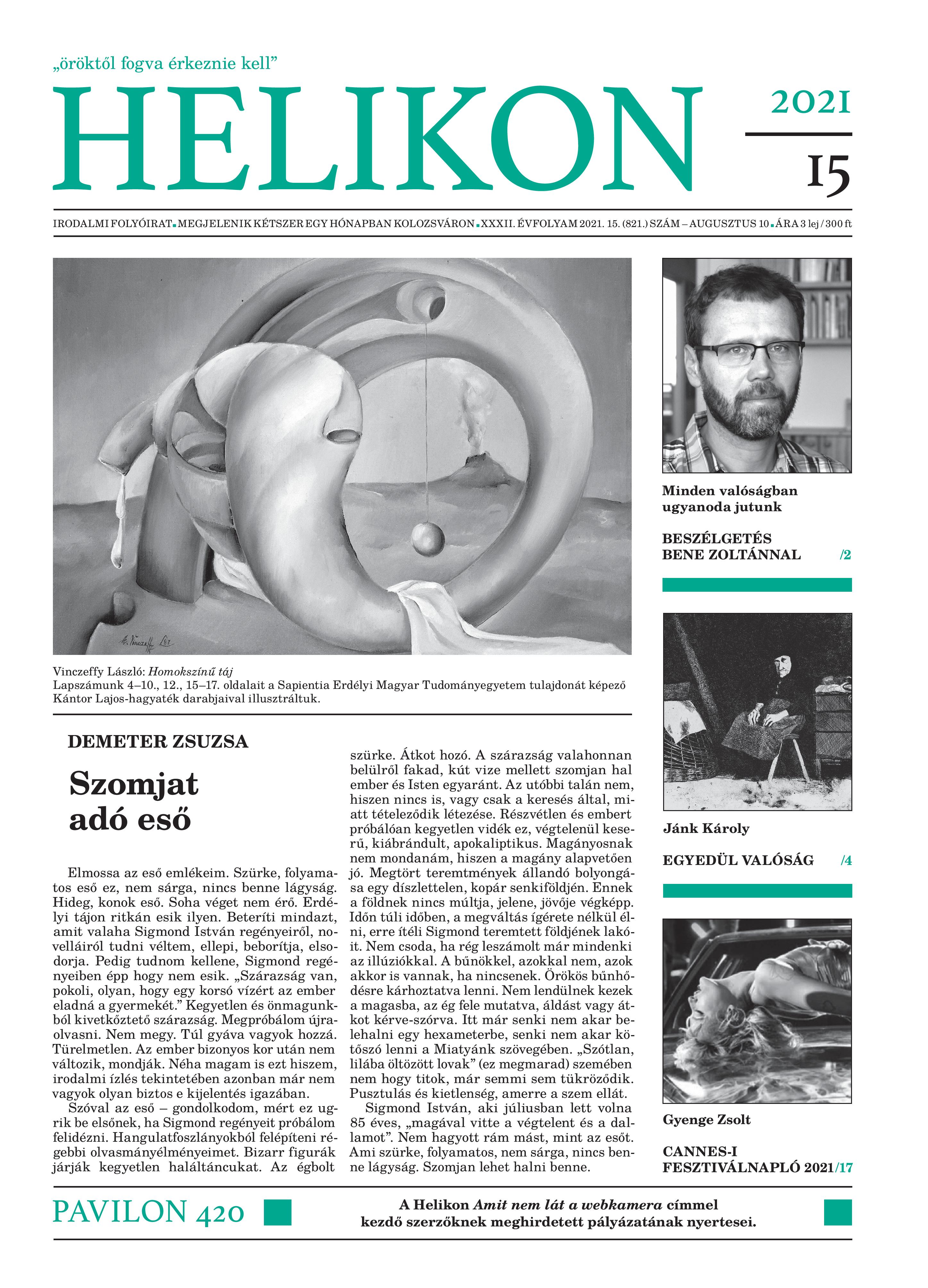
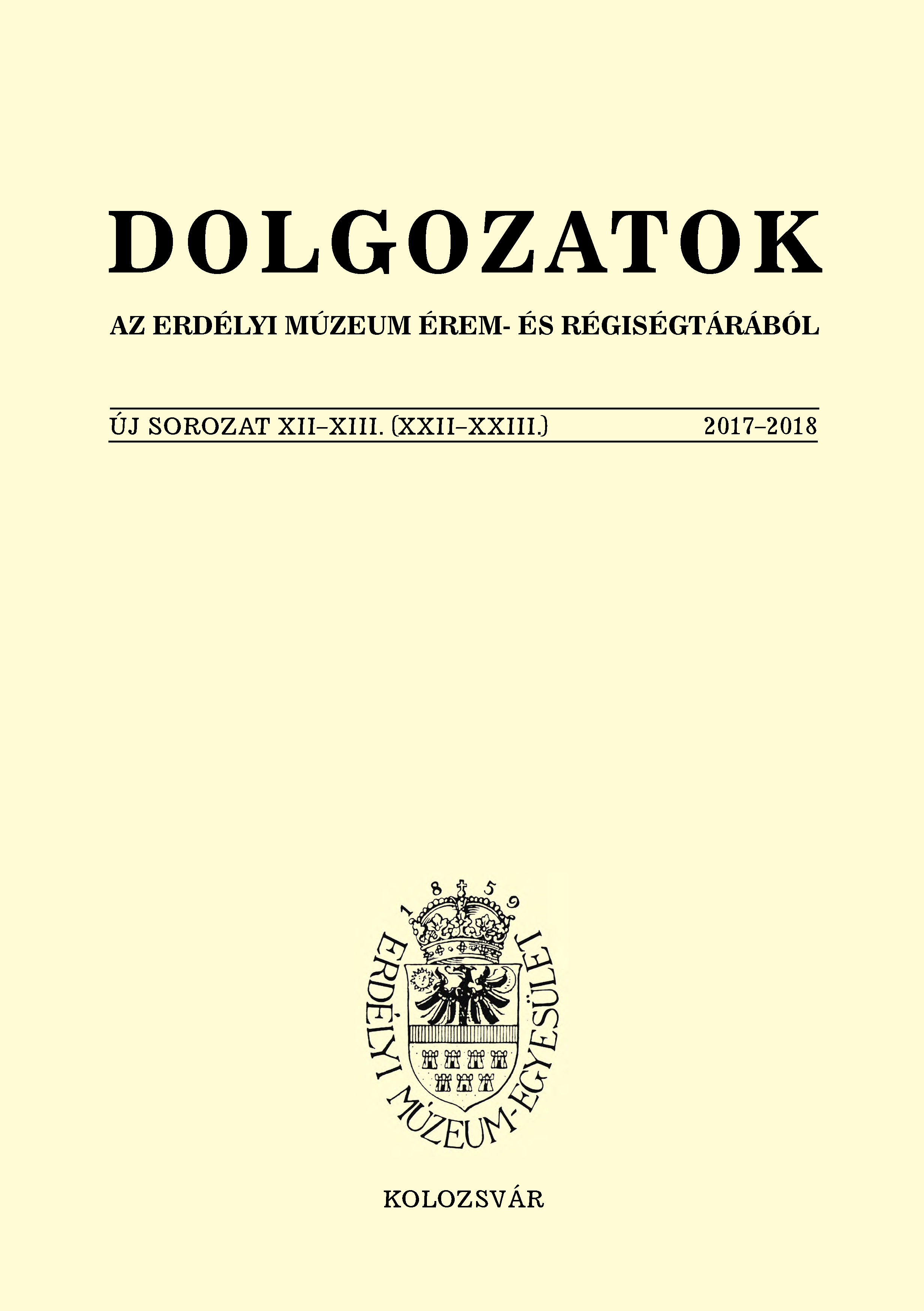
In accordance with photographer Marian Reismann’s (1911–1992) wish in her last will, her legacy came into the possession of the Hungarian Photography Museum, Kecskemét in 1992. While processing the heritage, a thick folder was found with a further instruction from the photographer, saying that after her death the folder should be handed over to the Petőfi Literary Museum. The folder contained 245 letters by György Buday (1907–1990), woodcutter, book designer and set designer. The letters written between October 1933 and March 1938 were addressed to eurythmic dancer Lilla Bauer (1912–2011 or 2012). Although we could not find Lilla Bauer’s replies in either Marian Reismann’s or György Buday’s legacy, Buday’s letters themselves amount to a sort of diary, recording not only his art work and the events of his life in Szeged, but also the phases of Lilla Bauer’s artistic development and career. Up to the early 1990’s, Lilla Bauer’s person, art, and romantic relationship with Buday were scarcely known, since she spent most of her adult life outside Hungary. However, the emergence of Buday’s letters made it possible to do research and get to know more and more about her life and art. Provided her heritage returns to Hungary from England, where the dancer died a few years ago, or at least it becomes accessible, researchers will be able to survey her life and work as a whole, thus contributing to the history of eurythmics both in Hungary and worldwide. Lilla Bauer was born into a well-to-do middle-class family. After finishing her secondary education, from the late 1920s on she attended a eurythmics school run by eurythmic dancer and choreographer Olga Szentpál (1895–1968), who used the Dalcroze method. The annual school exams were public events and several papers published reviews about them, each mentioning Lilla Bauer’s development and outstanding performance, anticipating a bright career for her. It is clear from the reports that the students of the school performed in events outside the school as well as at theatre performances, moreover, the most talented ones, such as Lilla Bauer, gave solo dance performances and took part in international competitions. Having graduated in 1933, she immediately gave a solo performance on March 14, participated in a dance competition in Warsaw with huge success in June and, in August, she danced with the Szentpál Company at the Szeged Open Air Theatre Festival, taking part in the production of The Tragedy of Man, a drama by Imre Madách. It was then that she met Buday, the set designer of the production, and they fell in love with each other. In the autumn of 1933, in order to obtain further training and experiences, Lilla Bauer joined the ballet company of Kurt Jooss, world famous choreographer of the dance production The Green Table. The company fled Germany following Hitler’s rise to power; and, after a short stay in the Netherlands, in the spring of 1934, they settled down in Dartington Hall, Dartington, Devon, England, on the estate of philanthropists Leonard and Dorothy Elmhirst. The dance company was based there for rest and rehearsal, and set out for tours from Dartington. Lilla Bauer appeared on stage in Hungary again in 1937 and 1938 as a member of the Dance Theatre of Kurt Jooss. She trained the dancers as well as performed in the production of The Tragedy of Man, and also gave a two-hour long solo dance performance. By then her relationship with Buday had terminated. Curiously, however, both of them ended up living in England. Apart from the numerous considerable letters, there are several wood engravings and woodcuts depicting Lilla Bauer by György Buday to commemorate the short-lived relationship of two exceptional artists.
More...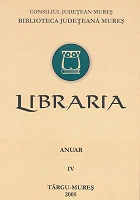
Review of: Márai Sándor, Lumânările ard până la capăt, Bucureşti, Humanitas, 2004, 162 p.
More...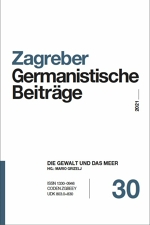
The review of: Ilona Sármány-Parsons: Bécs müvészeti élete Ferenc József korában, ahogy Hevesi Lajos látta [Wiens Kunstleben in der Epoche Franz Josephs, wie Ludwig Hevesi es gesehen hat]. Budapest: Balassi Kiadó 2019, 472 S.
More...